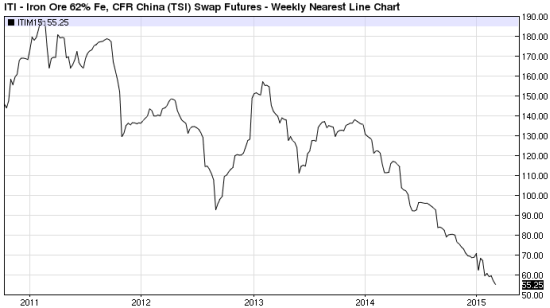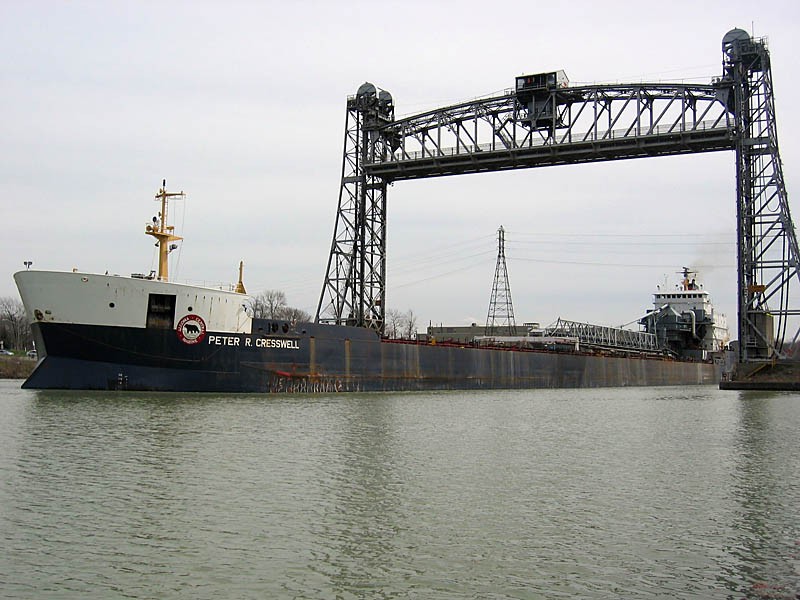Iron ore to remain above $100 forever
Post on: 16 Март, 2015 No Comment

Mac Bank has released a huge new study of the future of the iron ore price and has concluded that its all good:
We expect $100/t plus iron ore prices into the medium term
We have undertaken a detailed run-through of the iron ore demand and supply dynamics, focusing on a bottom-up approach to forecasting steel demand in China and a thorough investigation of inflation, expansions and depletions in both the Chinese domestic iron ore industry and the seaborne market. We conclude that iron ore prices will remain above $115/t over the next two years and will remain above $100/t out to 2020, based on an assessment of the competitive cost curve structure. As such, we have raised our long-run iron ore forecast to $90/t CFR China (62% basis, real $2013) from $80/t previously.
Taking a detailed look at the Chinese domestic ore curve
This work incorporates a detailed study of the Chinese domestic iron ore industry, focusing on cost inflation, capacity expansion and depletion. Based on our projections of the Chinese and seaborne supply curve, we find that nearly 40% of Chinese capacity, largely in the hands of private operators, will be uneconomic by 2018 under our base case forecasts. We believe the Chinese iron ore industry will behave in an economically rational way, as the financial and political incentives to support a loss making sector are no longer present.
The decision-making window closes quickly in a displacement cycle
Our project by project analysis of the potential seaborne expansions finds that half of the proposed projects will require a long-run price of over $100/t to generate a decent IRR and subsequently, depending on their timing to market, many look at risk. Meanwhile, we feel there is just a two-year decision making (and funding) window left for proposed assets before the shadow cast from Vale‟s 90mtpa S11D project prevents further approvals. As a result, we expect base case seaborne supply additions of 380mt through 2020, well below market expectations, as many prospective additions are not progressed, assuming rational decision making.
Moving into an environment of lower volatility
One of the key takeaways from our analysis is that the expected range of iron ore prices within any given year is set to be substantially reduced. With a 200mtpa annualised swing from peak to trough iron ore demand within any given year being common, the steep gradient of the cost curve drives “efficient volatility”, through the need to incentivise and displace marginal tonnes at various points in the cycle. Into the medium term, we see the upper end of the curve flattening, resulting in lower levels of volatility over time and as such, there should be increasing confidence in terms of the range iron ore will trade between in any given year. Certainly, potential for overshoot and undershoot will remain; however, the lower volatility could potentially be the catalyst for positive equity rerating. We note also that $85-90/t represents a floor in cyclical price swings throughout the forecast period. This scenario plays into the hands of the major producers, whose top tier assets allow them to avoid the competitive scrap their smaller peers will be engaged in, while having greater confidence around medium-term investment plans.
A few points:

Mac Bank appears to be having its cake and eating it too. Somehow the price or iron ore is going to stay above $100 but projects that are viable above $100 arent going to go ahead? The study agrees that Rios Pilbara 360 will happen. Add Roy Hill and thats all you need for a massive surplus.
Assuming rational decision making by the Chinese that is, going out of business so Australian miners can ship cheaper ore is not supported by experience. Chinese iron ore may swing in and out of production on price volatility now but that is a totally different proposition to going out of business permanently. The Mac note acknowledges that the Chinese government has every incentive to keep over-production running in calculating that a $6 billion investment in subsidies will generate $36 billion in price falls but reckons sanctions from the WTO etc make it a bad idea. This is far too neat for me. There are any number of ways that regional authorities can hide support without incurring sanction. The examples of the two coals are illustrative. they have not behaved rationally as supply has grown. The price has just kept on falling until the losses are so big for marginal players that rationality is like being hit in the head with a shovel.
Finally, there is an assumption in this document that Australia can deflate itself and continue to become more competitive while other nations cant. I expect an huge and global cost-out deflation cycle for iron ore (and other commodities) everywhere.
In the end I agree with Macquarie on the basic dynamics of the market and on the outcomes. My disagreement is that it will all happen smoothly enough to keep the iron ore price so high for so long. The lowest marginal cost per tonne will ultimately set the price for iron ore and to me that is at $80 not $100 and that implies going lower first.
Share on Facebook Share on Twitter Share on Reddit














